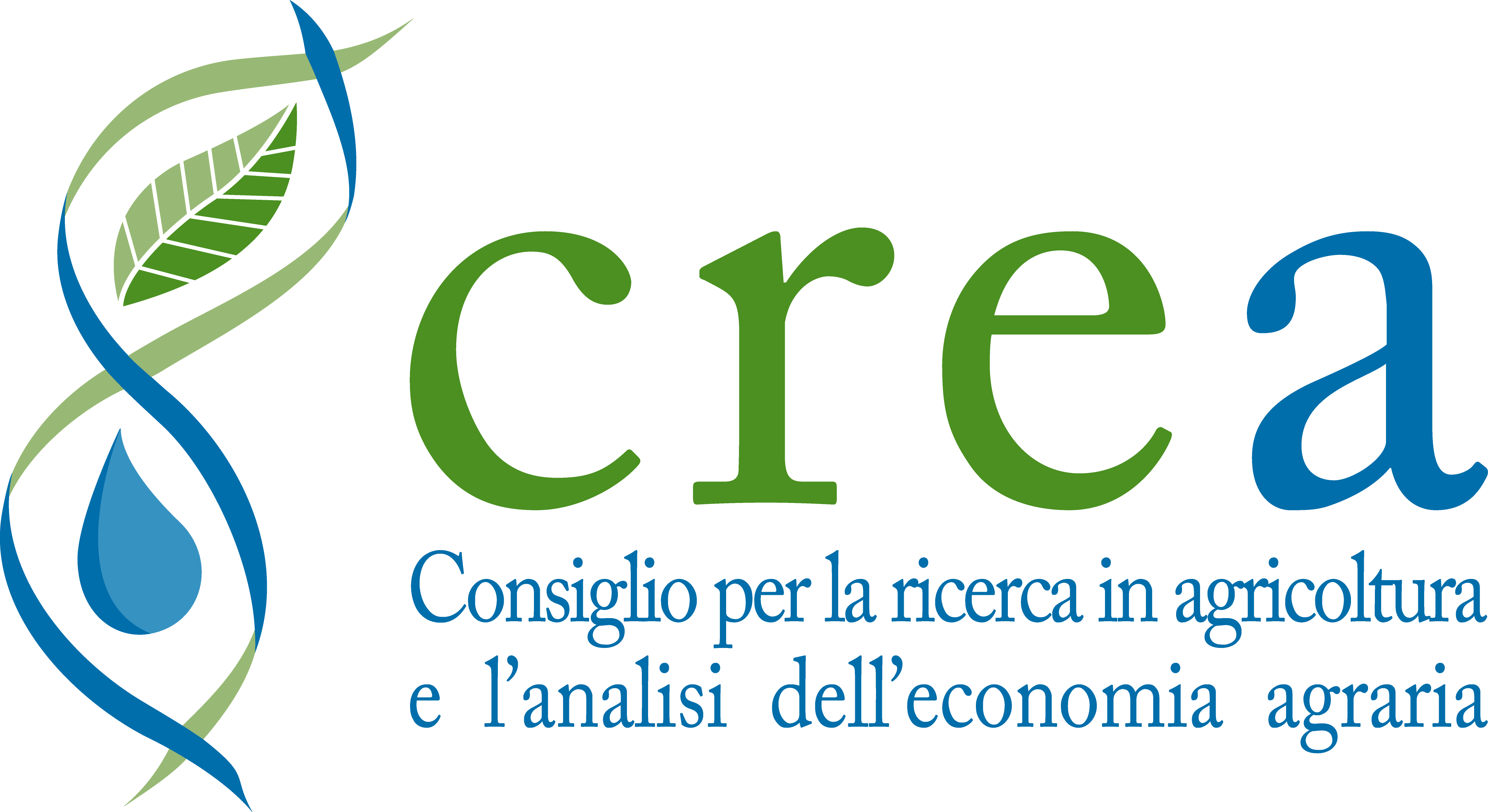 A RESTful endpoint to access our historical weather data. Accepts POST requests with JSON payload.
A RESTful endpoint to access our historical weather data. Accepts POST requests with JSON payload.
A RESTful endpoint to access our historical weather data. Accepts POST requests with JSON payload.
Status:
 Details
Details
 FAIR ENVRI atmospheric data demonstrator
FAIR ENVRI atmospheric data demonstrator
This demonstrator aims to shorten time response in providing scientific analysis of an extreme event and harmonized dataset and tools. It offers the following features: search and determine Atmospheric RIs data availability for the period and area of interest with a focus on Essential Climate Variables (ECVs); fetch the selected data including previews of the datasets; provide combined plotting of the datasets timeseries; provide links to the datasets landing pages for download.
Status:
 Details
Details
 Atmospheric colocation service
Atmospheric colocation service
Given a list of ground stations and satellites of interest, the colocation service aims at identifying the satellite observations that match the colocation criteria specified by the user. This service provides a suite of tools to identify and retrieve satellite observations that match ground-based measurements, given a list of stations and satellites, and user-specified colocation criteria. It's composed of a RESTful API and web user interface to test the API.
Status:
 Details
Details
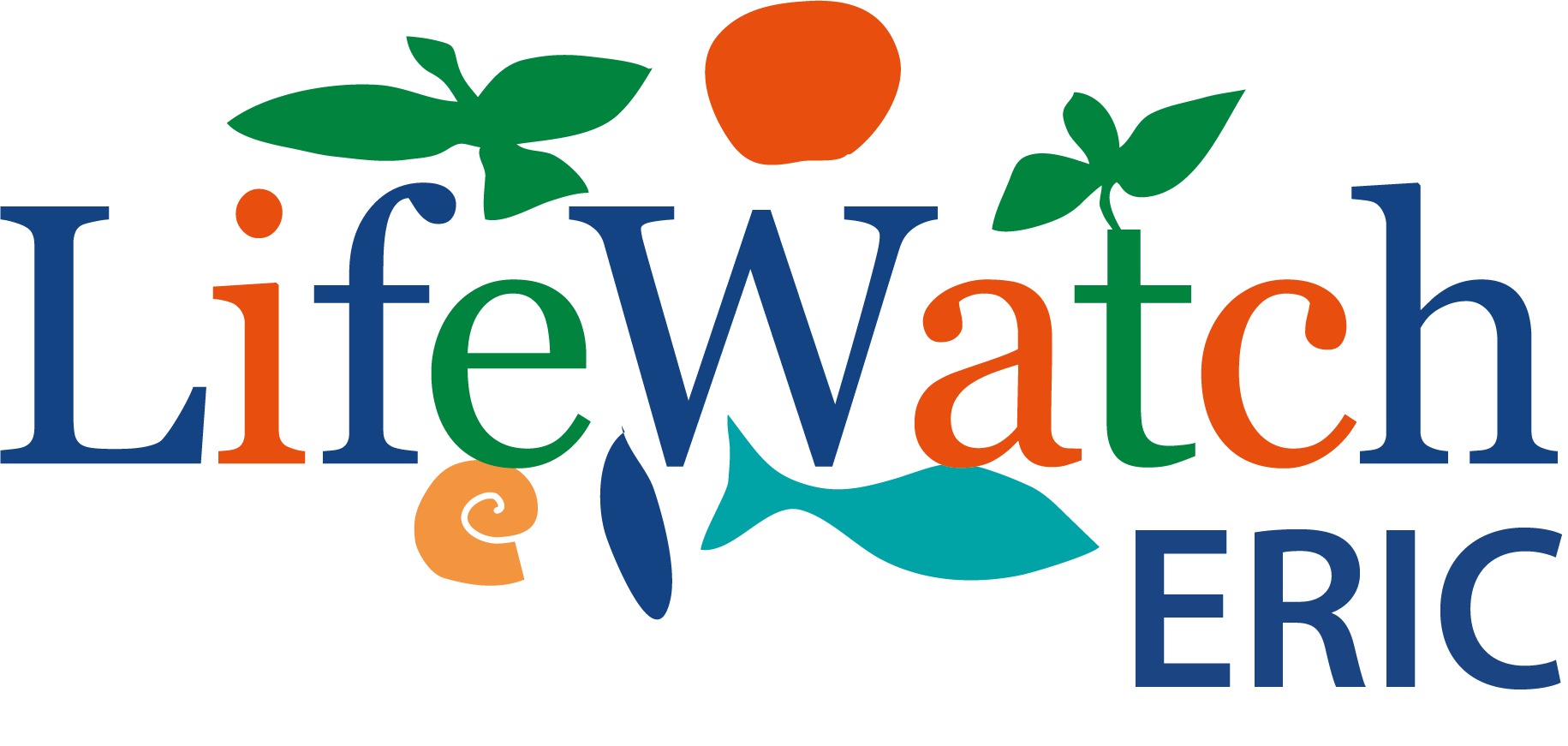 EcoPortal Metadata
EcoPortal Metadata
This call to the EcoPortal API retrieves metadata for all resources published in EcoPortal.
Status:
 Details
Details
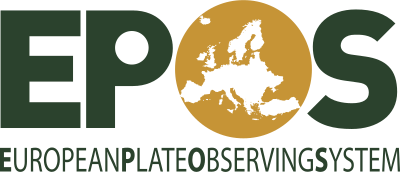 LOS Displacement Time Series
LOS Displacement Time Series
Temporal evoluton of the surface displacement projected along the satellite Line of Sight (LOS)
Status:
 Details
Details
 LifeWatch ERIC Metadata Catalogue Web Service
LifeWatch ERIC Metadata Catalogue Web Service
Web Service endpoint to query the LifeWatch ERIC Metadata Catalogue
Status:
 Details
Details
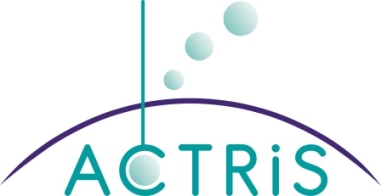 ACTRIS REST API - List of Metadata
ACTRIS REST API - List of Metadata
API documentation for the ACTRIS metadata catalog. In order to add or delete metadata in the catalog, you would need to be a registered data provider and create an API token. Please contact the ACTRIS Data Centre (DVAS unit) if you have any questions or need an API token.
Status:
 Details
Details
 ACTRIS REST API - Stations
ACTRIS REST API - Stations
API documentation for the ACTRIS metadata catalog. In order to add or delete metadata in the catalog, you would need to be a registered data provider and create an API token. Please contact the ACTRIS Data Centre (DVAS unit) if you have any questions or need an API token.
Status:
 Details
Details
 ACTRIS REST API - ContentAttributes
ACTRIS REST API - ContentAttributes
API documentation for the ACTRIS metadata catalog. In order to add or delete metadata in the catalog, you would need to be a registered data provider and create an API token. Please contact the ACTRIS Data Centre (DVAS unit) if you have any questions or need an API token.
Status:
 Details
Details
 ACTRIS REST API - List of networks
ACTRIS REST API - List of networks
API documentation for the ACTRIS metadata catalog. In order to add or delete metadata in the catalog, you would need to be a registered data provider and create an API token. Please contact the ACTRIS Data Centre (DVAS unit) if you have any questions or need an API token.
Status:
 Details
Details
 ACTRIS Vocabulary Server
ACTRIS Vocabulary Server
This server documents the vocabulary and controlled lists of terms used by the Aerosol, Clouds and Trace Gases Research Infrastructure (ACTRIS).
Status:
 Details
Details
 Unwrapped Interferograms
Unwrapped Interferograms
Map of the flattened phase difference (full evolution) computed between two SAR images acquired over the same scene with the same geometry
Status:
 Details
Details
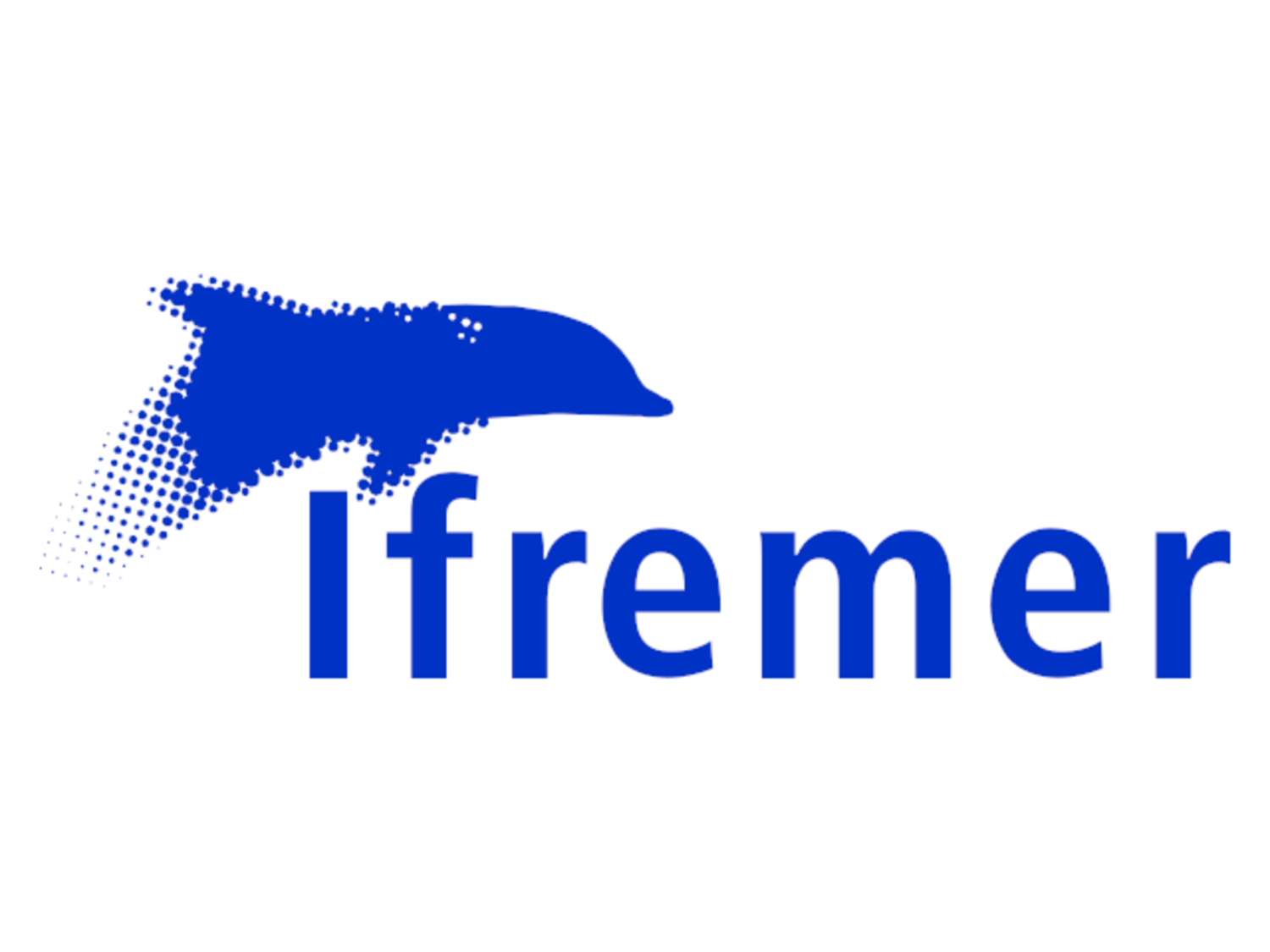 Ifremer OpenSearch service
Ifremer OpenSearch service
The Ifremer OpenSearch service is designed to facilitate high-performance geospatial data discovery and access with the ability to support multi-metadata standard specifications. The service is powered by Big Data technologies. This is a joint effort between Ifremer CERSAT, and IT Department.
Status:
 Details
Details
 Argo Data subsetting API
Argo Data subsetting API
The Argo data accessible through a Swagger API
Status:
 Details
Details
 Argo SPARQL Endpoint
Argo SPARQL Endpoint
Argo SPARQL Endpoint containing floats metadata such as vertical profiles, sensors, deployment and provenance.
Status:
 Details
Details
 Argo Metadata API
Argo Metadata API
The Argo metadata accessible through a Swagger API
Status:
 Details
Details
 Ifremer ERDAPP server
Ifremer ERDAPP server
ERDDAP is a data server that gives you a simple, consistent way to download subsets of scientific datasets in common file formats and make graphs and maps. This particular ERDDAP installation has oceanographic data (for example, data from satellites and buoys).
Status:
 Details
Details
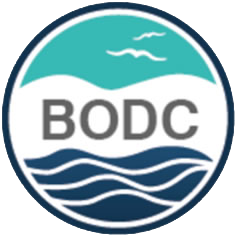 The NERC Vocabulary Server
The NERC Vocabulary Server
The NERC Vocabulary Server contains Argo vocabularies. Originally known as reference tables, they are used extensively to constrain the contents of the Argo NetCDF files, and to enhance the interoperability of the Argo data system. The transfer of existing reference tables to NVS collections, as well as the creation of new ones, is an ongoing effort managed by the Argo Vocabulary Task Team and supported by BODC.
Status:
 Details
Details
 DEM in radar geometry
DEM in radar geometry
Digital Elevation Model provided in radar coordinates
Status:
 Details
Details
 Lookup table from radar coordinates to ground coordinates
Lookup table from radar coordinates to ground coordinates
Lookup table to convert radar coordinates in ground coordinates
Status:
 Details
Details
 Spatial Coherence
Spatial Coherence
Map of the spatial coherence computed between two SAR images acquired over the same scene with the same geometry
Status:
 Details
Details
 Interferogram Atmospheric Phase Screen from Global Atmospheric Model
Interferogram Atmospheric Phase Screen from Global Atmospheric Model
Atmospheric Phase Screen computed from Global Atmospheric Model for singel interferograms
Status:
 Details
Details
 Map of LOS Vector
Map of LOS Vector
Map of the unit vectors of the satellite Line of Sight
Status:
 Details
Details
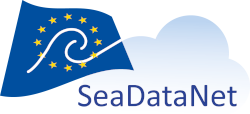 EDMERP SPARQL Endpoint
EDMERP SPARQL Endpoint
EDMERP covers marine research projects for a wide range of disciplines including marine meteorology; physical, chemical and biological oceanography; sedimentology; marine biology and fisheries; environmental quality; coastal and estuarine studies; marine geology and geophysics etc. Research projects are described as metadata factsheets with their most relevant aspects. The primary objective is to support users in identifying interesting research activities and in connecting them to involved research managers and organisations across Europe. Currently, EDMERP describes around 3.000 research projects from organisations across Europe. This SPARQL endpoint publishes the EDMERP metadata records in RDF.
Status:
 Details
Details
 Wrapped Interferograms
Wrapped Interferograms
Map of the flattened phase difference (restricted in the -pi,pi domain) computed between two SAR images acquired over the same scene with the same geometry
Status:
 Details
Details
 ICOS Ecosystem Release
ICOS Ecosystem Release
ICOS ERIC is a pan-European research infrastructure that provides standardised and open data on the atmospheric composition for greenhouse gases, green house gas exchange fluxes between terrestrial ecosystems and the atmosphere, and CO2 partial pressure at water surfaces. The Carbon Portal is the data discovery and access portal of ICOS. It offers free access to all ICOS observational data, elaborated data products from ICOS end user communities, as well as to scientific and educational products and services. The main target audiences of the Carbon Portal are researchers from environmental and earth science disciplines, such as studies of atmospheric composition, climate, ecosystem functioning, micrometeorology, physical geography and remote sensing.
In addition to providing user-friendly (and machine-friendly) internet- and other computer-network based interfaces, the Carbon Portal organises long-term archiving of ICOS data products to guarantee their safe storage, future access and easy re-use. ICOS is committed to following data repository and curation best practices, including the FAIR principles All ICOS data products are offered under a Creative Commons Attribution license (CC-BY) to all users who accept the ICOS Data Policy.
The Carbon Portal is co-hosted by Lund University in Sweden and Wageningen University in the Netherlands.
Status:
 Details
Details
 Waveform quality and availability metrics distributed by the ORFEUS Data Center at KNMI
Waveform quality and availability metrics distributed by the ORFEUS Data Center at KNMI
Access to waveform quality and availability metrics (JSON format) distributed by the ORFEUS Data Center at KNMI.
Status:
 Details
Details
 EDMO SPARQL Endpoint
EDMO SPARQL Endpoint
EDMO contains up-to-date addresses and activity profiles of research institutes, data holding centres, monitoring agencies, governmental and private organisations, that are in one way or another engaged in oceanographic and marine research activities, data & information management and/or data acquisition activities. Currently, EDMO lists and describes more than 4.000 organisations. This SPARQL endpoint publishes the EDMO metadata records in RDF
Status:
 Details
Details
 Seismic waveforms distributed by the ORFEUS Data Center at KNMI
Seismic waveforms distributed by the ORFEUS Data Center at KNMI
Access to seismic waveforms (miniSEED format) distributed by the ORFEUS Data Center at KNMI.
Status:
 Details
Details
 STILT Footprint Tool on demand calculator (hosted by ICOS)
STILT Footprint Tool on demand calculator (hosted by ICOS)
The STILT Footprint Tool on-demand calculator service, provided by ICOS, allows registered users to run the STILT model framework to simultaneously identify the regions of influence (“footprints”) and the breakdown of the observable CO2 concentration “signal” into anthropogenic and biogenic contributions at hourly resolution. The outputs can be visualized using the accompanying STILT Footprint Tool viewer service https://stilt.icos-cp.eu/viewer/. This service is of primary interest for greenhouse gas researchers wishing to understand to what extent observation station networks can provide representative coverage of all important sources and sinks of CO2 in the European continent, thus providing a simplified approach towards evaluating different measurement networks and strategies. The current model framework has been developed at the Max Planck Institute for Biogeochemistry and is implemented as a web-based service at the ICOS Carbon Portal. It consists of the Lagrangian transport model STILT (Stochastic Time Inverted Lagrangian Transport; Lin et al., 2003 <https://doi.org/10.1029/2002JD003161>) together with emission-sector and fuel-type specific emissions derived from the EDGAR inventory (EC-JRC) combined with BP fuel consumption statistics, and biospheric flux estimates from the diagnostic biosphere model VPRM (Vegetation Photosynthesis and Respiration Model; Mahadevan et al., 2008 <https://doi.org/10.1029/2006GB002735>). Both the STILT Footprint Tool viewer and STILT Footprint Tool on demand calculator services are provided by ICOS Carbon Portal in the context of ATMO-ACCESS project. Therefore an ATMO-ACCESS login is required to use them.
Status:
 Details
Details
 STILT Footprint Tool viewer (hosted by ICOS)
STILT Footprint Tool viewer (hosted by ICOS)
The STILT Footprint Tool viewer service, provided by ICOS, allows users to visualise the variation over time of predicted CO2 concentrations from anthropogenic and natural sources, as these would be observable at a specific location (like a measurement station). At the same time, a map shows the corresponding “footprint” - the spatial extent of the regions contributing to the predicted CO2 concentrations. The data that are available in the viewer have been previously calculated using the STILT Footprint Tool on-demand footprint calculator service https://stilt.icos-cp.eu/worker/. While the STILT footprints are primarily interesting for greenhouse gas researchers wishing to understand to what extent observation station networks can provide representative coverage of all important sources and sinks of CO2 in the European continent, the visualisations of how the regions of influence for the different contributions to the potentially observable CO2 concentration vary over time and space are also interesting for non-experts. The STILT Footprint Tool is based on model simulations that combine the Lagrangian transport model STILT (Stochastic Time Inverted Lagrangian Transport), data on anthropogenic emissions from the EDGAR inventory, and biospheric sources and sinks estimated by the biosphere model VPRM (Vegetation Photosynthesis and Respiration Mode). The model framework has been developed at the Max Planck Institute for Biogeochemistry and is implemented as a web-based service at the ICOS Carbon Portal. You can read more here https://www.icos-cp.eu/data-services/tools/stilt-footprint. Both the STILT Footprint Tool viewer and STILT Footprint Tool on demand calculator services are provided by ICOS Carbon Portal in the context of ATMO-ACCESS project. Therefore an ATMO-ACCESS login is required to use them.
Status:
 Details
Details
 ICOS JupyterHub
ICOS JupyterHub
The Integrated Carbon Observation System, ICOS, provides standardised and open data on greenhouse gas concentrations in the atmosphere, carbon fluxes between the atmosphere, the land surface and the oceans, as well as elaborated data products based on the ICOS observations. To complement the data discovery functionalities of the ICOS Carbon Portal, ICOS is offering a set of Notebooks written in the Python language. The audiences for the Notebooks range from the interested general public, who want to explore ICOS data and learn about greenhouse gases and climate change, to advanced scientific users who use the Notebooks to develop new algorithms and collaboratively analyse data to solve current research questions. The public Exploredata JupyterHub is open to everyone, and to start using it all that is required is to request a password. It offers many introductory Notebooks to explore data, many of which do not assume any knowledge of Python or programming. The examples range from how to access data and create interactive plots, to a quiz about the carbon cycle, as well as materials used in educational settings. Our collaborative JupyterHub service for registered users offers more advanced options like sharing notebooks and data between users, uploading users’ own data for analysis together with ICOS data, and permanent storage of notebooks and data. This service is continuously expanded in close consultation with our end user communities to support their scientific analysis and interpretation of ICOS data and products.
Status:
 Details
Details
 Station metadata distributed by the ORFEUS Data Center at KNMI
Station metadata distributed by the ORFEUS Data Center at KNMI
Access to seismic station metadata (XML and GEOJSON formats) distributed by the ORFEUS Data Center at KNMI.
Status:
 Details
Details
 IAGOS Data Portal - REST API for data and metadata access
IAGOS Data Portal - REST API for data and metadata access
The IAGOS Data Portal provides observational data and added-value products produced by the European Research Infrastructure IAGOS. Datasets can be discovered and downloaded through the IAGOS REST API. Data and metadata follow the standards for Atmosphere community.
Status:
 Details
Details
 IAGOS Data Portal - Human readable interface
IAGOS Data Portal - Human readable interface
The IAGOS Data Portal provides observational data and added-value products produced by the European Research Infrastructure IAGOS. Datasets can be discovered and downloaded through the portal. Data and metadata follow the standards for Atmosphere community.
Status:
 Details
Details
 Seadatanet - visualization services (Erddap)
Seadatanet - visualization services (Erddap)
Browsing the product catalogue allows users to search for one or more available products as well as the related data collections. Users can also retrieve the full set of metadata, originators and distributors. The catalogue is integrated with the Map viewer, is compliant with ISO19139 metadata standards and fulfils INSPIRE Directive requirements.
Status:
 Details
Details
 Seadatacloud - Products Catalogue (CSW)
Seadatacloud - Products Catalogue (CSW)
Browsing the product catalogue allows users to search for one or more available products as well as the related data collections. Users can also retrieve the full set of metadata, originators and distributors. The catalogue is integrated with the Map viewer, is compliant with ISO19139 metadata standards and fulfils INSPIRE Directive requirements.
Status:
 Details
Details
 Seadatanet - Sextant SPARQL Endpoint
Seadatanet - Sextant SPARQL Endpoint
Contains metadata about Sextant-Seadtanet catalogue products, such as their DCAT description, download link and CDI used.
Status:
 Details
Details
 ICOS Oceanic Release
ICOS Oceanic Release
ICOS ERIC is a pan-European research infrastructure that provides standardised and open data on the atmospheric composition for greenhouse gases, green house gas exchange fluxes between terrestrial ecosystems and the atmosphere, and CO2 partial pressure at water surfaces. The Carbon Portal is the data discovery and access portal of ICOS. It offers free access to all ICOS observational data, elaborated data products from ICOS end user communities, as well as to scientific and educational products and services. The main target audiences of the Carbon Portal are researchers from environmental and earth science disciplines, such as studies of atmospheric composition, climate, ecosystem functioning, micrometeorology, physical geography and remote sensing.
In addition to providing user-friendly (and machine-friendly) internet- and other computer-network based interfaces, the Carbon Portal organises long-term archiving of ICOS data products to guarantee their safe storage, future access and easy re-use. ICOS is committed to following data repository and curation best practices, including the FAIR principles All ICOS data products are offered under a Creative Commons Attribution license (CC-BY) to all users who accept the ICOS Data Policy.
The Carbon Portal is co-hosted by Lund University in Sweden and Wageningen University in the Netherlands.
Status:
 Details
Details
 CDI SPARQL Endpoint
CDI SPARQL Endpoint
The SeaDataNet Common Data Index (CDI) service gives users a highly detailed insight in the availability and geographical spreading of marine data sets that are managed by more than 100 marine and oceanographic data centres, located in 34 countries, around and riparian to European seas. This SPARQL endpoint publishes the CDI metadata records in RDF
Status:
 Details
Details
 ICOS Atmospheric Release
ICOS Atmospheric Release
ICOS ERIC is a pan-European research infrastructure that provides standardised and open data on the atmospheric composition for greenhouse gases, green house gas exchange fluxes between terrestrial ecosystems and the atmosphere, and CO2 partial pressure at water surfaces. The Carbon Portal is the data discovery and access portal of ICOS. It offers free access to all ICOS observational data, elaborated data products from ICOS end user communities, as well as to scientific and educational products and services. The main target audiences of the Carbon Portal are researchers from environmental and earth science disciplines, such as studies of atmospheric composition, climate, ecosystem functioning, micrometeorology, physical geography and remote sensing.
In addition to providing user-friendly (and machine-friendly) internet- and other computer-network based interfaces, the Carbon Portal organises long-term archiving of ICOS data products to guarantee their safe storage, future access and easy re-use. ICOS is committed to following data repository and curation best practices, including the FAIR principles All ICOS data products are offered under a Creative Commons Attribution license (CC-BY) to all users who accept the ICOS Data Policy.
The Carbon Portal is co-hosted by Lund University in Sweden and Wageningen University in the Netherlands.
Status:
 Details
Details
 ICOS open SPARQL endpoint (machine-to-machine)
ICOS open SPARQL endpoint (machine-to-machine)
ICOS has developed its own metadata model and ontology to describe all the digital objects it manages, and the relationships between them – not only data but also people, measurement stations, instruments, etc. The metadata is stored as time-stamped assertions (“triples”) expressed in RDF (Resource Description Framework), together with the metadata model itself. The open SPARQL endpoint gives full read access to this ICOS ontology based metadata repository and is meant for direct machine to machine operation. The main target audience for this service is IT developers and IT-savvy researchers who wish to implement programmatic queries of the ICOS metadata, for example to retrieve up-to-date information about ICOS digital objects for use in data analysis scripts. Supported output formats include JSON, CSV, XML and TSV/Turtle. For more information about ICOS metadata, visit our GitHub “meta” repository at https://github.com/ICOS-Carbon-Portal/meta.
Status:
 Details
Details
 ICOS open SPARQL endpoint GUI (for humans)
ICOS open SPARQL endpoint GUI (for humans)
ICOS has developed its own metadata model and ontology to describe all the digital objects it manages, and the relationships between them – not only data but also people, measurement stations, instruments, etc. This user interface to the open SPARQL endpoint gives advanced human users access to our complete ontology based ICOS metadata repository. In order to give users a head start, a set of common queries are provided in the GUI itself. In addition, for each search made using our data discovery and access portal (https://data.icos-cp.eu/portal/), the equivalent SPARQL query is available; these can be entered into the GUI or saved allowing to reproduce the search at a later time. The GUI supports export of the SPARQL query results in several formats, including JSON, CSV, XML and TSV/Turtle. Note that some familiarity with SPARQL (SPARQL Protocol and RDF Query Language), LOD (Linked Open Data) and OWL (the Web Ontology Language) is strongly recommended for users who want to create their own queries in the GUI.
Status:
 Details
Details
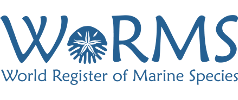 Marine Regions gazetteer
Marine Regions gazetteer
Marine Regions provides a standard, relational list of geographic names coupled with information and maps of the geographic locations of these features. The improves access to and clarity of geographic marine names such as seas, sandbanks, ridges, bays, boundaries, inlets, etc, and provides unambiguous information on the boundaries of marine biogeographic and managerial marine areas. Marine Regions gathers data on marine objects from various sources (authoritative databases, ecological classifications, etc) and where available, includes their geometries. In addition, conceptual information (e.g. the type of object) are added and organised in a hierarchy. Each object is assigned a unique ID (MRGID: the marine region geographic ID), which allows for unambiguous reference to the objects, effectively forming a unique and permanent vocabulary of marine region object names. Marine Regions is part of the LifeWatch project, and serves as a geographical basis for biodiversity databases, global fisheries research, and maritime applications. Marine Regions activities focus on two main outputs: its gazetteer and its geographical data products. The gazetteer provides a standard list of marine geographical place names and locations; its data products highlight particular geographical objects, the most popular one being the Marine Regions Maritime Boundaries. Marine regions also provides a number of webservices. The LDES service: all gazetter entries are exposed as Linked Data Event Streams (LDES), with one Event Stream page per hour. Each page contains a link to the next/previous page, and each MRGID URI is versioned by adding a 't' query parameter, indicating the time of the change.
Status:
 Details
Details
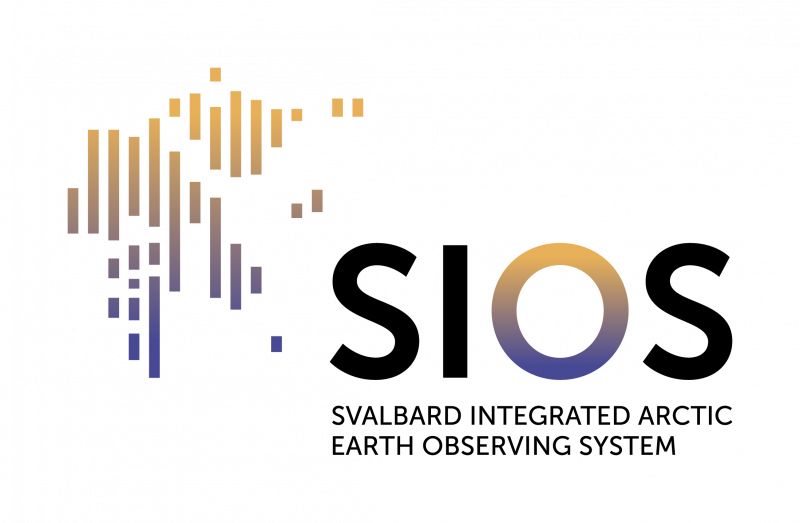 SIOS observation facility catalogue - REST API
SIOS observation facility catalogue - REST API
The SIOS observation facility catalogue has been developed to provide an overview of the observation facilities which collect SIOS data. An observation facility can be one instrument or a collection of instruments, e.g. a weather station, and is a term used by the World Meteorological Organization (WMO). The annotation is standardised following the WMO standards as far as possible, in order to make entries unambiguous and interoperable internationally.
Status:
 Details
Details
 Machine readable metadata endpoint (OGC-CSW) for the Svalbard Integrated Arctic Earth Observing System (SIOS)
Machine readable metadata endpoint (OGC-CSW) for the Svalbard Integrated Arctic Earth Observing System (SIOS)
The SIOS CSW catalogue is a machine interface for accessing the metadata records exposed in the SIOS Data access portal. It integrates information from SIOS partner data repositories into a unified endpoint. The catalogue allows for discovery of metadata via numerous APIs (CSW 2/CSW 3, OpenSearch, OAI-PMH), and supports different output profiles.
Status:
 Details
Details
 AphiaIDsByAttributeKeyID
AphiaIDsByAttributeKeyID
The World Register of Marine Species (WoRMS) is a species information backbone, providing an authoritative classification and catalogue of names of marine organisms. WoRMS contains the names, synonyms, and vernacular names, as well as references, images, biogeographic data, distributions, and traits, where those information are available. The information in WoRMS is curated and maintained at VLIZ, and a number of services to query for information in WoRMS are provided via its website (https://www.marinespecies.org/). The data system behind WoRMS is called Aphia. All the names in WoRMS are tagged with an unique and persistent ID: the AphiaID. Using the WoRMS RESTful services, one can obtain the information held in Aphia using the AphiaID as key, or using the names, external identifiers, classification and trait keywords, etc. The service AphiaIDsByAttributeKeyID is a query to get a list of AphiaIDs (max 50) with attribute tree for a given attribute ID.
Status:
 Details
Details
 AphiaAttributeValuesByCategoryID
AphiaAttributeValuesByCategoryID
The World Register of Marine Species (WoRMS) is a species information backbone, providing an authoritative classification and catalogue of names of marine organisms. WoRMS contains the names, synonyms, and vernacular names, as well as references, images, biogeographic data, distributions, and traits, where those information are available. The information in WoRMS is curated and maintained at VLIZ, and a number of services to query for information in WoRMS are provided via its website (https://www.marinespecies.org/). The data system behind WoRMS is called Aphia. All the names in WoRMS are tagged with an unique and persistent ID: the AphiaID. Using the WoRMS RESTful services, one can obtain the information held in Aphia using the AphiaID as key, or using the names, external identifiers, classification and trait keywords, etc. The service AphiaAttributeValuesByCategoryID is a query to get the list values that are grouped by categoryID.
Status:
 Details
Details
 AphiaTaxonRanksByID
AphiaTaxonRanksByID
The World Register of Marine Species (WoRMS) is a species information backbone, providing an authoritative classification and catalogue of names of marine organisms. WoRMS contains the names, synonyms, and vernacular names, as well as references, images, biogeographic data, distributions, and traits, where those information are available. The information in WoRMS is curated and maintained at VLIZ, and a number of services to query for information in WoRMS are provided via its website (https://www.marinespecies.org/). The data system behind WoRMS is called Aphia. All the names in WoRMS are tagged with an unique and persistent ID: the AphiaID. Using the WoRMS RESTful services, one can obtain the information held in Aphia using the AphiaID as key, or using the names, external identifiers, classification and trait keywords, etc. The service AphiaTaxonRanksByID is a query to get the taxonomic ranks by their identifier.
Status:
 Details
Details
 AphiaRecordsByName
AphiaRecordsByName
The World Register of Marine Species (WoRMS) is a species information backbone, providing an authoritative classification and catalogue of names of marine organisms. WoRMS contains the names, synonyms, and vernacular names, as well as references, images, biogeographic data, distributions, and traits, where those information are available. The information in WoRMS is curated and maintained at VLIZ, and a number of services to query for information in WoRMS are provided via its website (https://www.marinespecies.org/). The data system behind WoRMS is called Aphia. All the names in WoRMS are tagged with an unique and persistent ID: the AphiaID. Using the WoRMS RESTful services, one can obtain the information held in Aphia using the AphiaID as key, or using the names, external identifiers, classification and trait keywords, etc. The service AphiaRecordsByName is a query to get all matching (max 50) Aphia records for a given name.
Status:
 Details
Details
 AphiaIDByName
AphiaIDByName
The World Register of Marine Species (WoRMS) is a species information backbone, providing an authoritative classification and catalogue of names of marine organisms. WoRMS contains the names, synonyms, and vernacular names, as well as references, images, biogeographic data, distributions, and traits, where those information are available. The information in WoRMS is curated and maintained at VLIZ, and a number of services to query for information in WoRMS are provided via its website (https://www.marinespecies.org/). The data system behind WoRMS is called Aphia. All the names in WoRMS are tagged with an unique and persistent ID: the AphiaID. Using the WoRMS RESTful services, one can obtain the information held in Aphia using the AphiaID as key, or using the names, external identifiers, classification and trait keywords, etc. The service AphiaIDByName is a query to get the AphiaID for a given name.
Status:
 Details
Details
 AphiaRecordsByTaxonRankID
AphiaRecordsByTaxonRankID
The World Register of Marine Species (WoRMS) is a species information backbone, providing an authoritative classification and catalogue of names of marine organisms. WoRMS contains the names, synonyms, and vernacular names, as well as references, images, biogeographic data, distributions, and traits, where those information are available. The information in WoRMS is curated and maintained at VLIZ, and a number of services to query for information in WoRMS are provided via its website (https://www.marinespecies.org/). The data system behind WoRMS is called Aphia. All the names in WoRMS are tagged with an unique and persistent ID: the AphiaID. Using the WoRMS RESTful services, one can obtain the information held in Aphia using the AphiaID as key, or using the names, external identifiers, classification and trait keywords, etc. The service AphiaRecordsByTaxonRankID is a query to get the Aphia records for a given taxon rank ID (max 50).
Status:
 Details
Details
 AphiaSourcesByAphiaID
AphiaSourcesByAphiaID
The World Register of Marine Species (WoRMS) is a species information backbone, providing an authoritative classification and catalogue of names of marine organisms. WoRMS contains the names, synonyms, and vernacular names, as well as references, images, biogeographic data, distributions, and traits, where those information are available. The information in WoRMS is curated and maintained at VLIZ, and a number of services to query for information in WoRMS are provided via its website (https://www.marinespecies.org/). The data system behind WoRMS is called Aphia. All the names in WoRMS are tagged with an unique and persistent ID: the AphiaID. Using the WoRMS RESTful services, one can obtain the information held in Aphia using the AphiaID as key, or using the names, external identifiers, classification and trait keywords, etc. The service AphiaSourcesByAphiaID is a query to get a the sources/references for a given AphiaID.
Status:
 Details
Details
 AphiaRecordsByDate
AphiaRecordsByDate
The World Register of Marine Species (WoRMS) is a species information backbone, providing an authoritative classification and catalogue of names of marine organisms. WoRMS contains the names, synonyms, and vernacular names, as well as references, images, biogeographic data, distributions, and traits, where those information are available. The information in WoRMS is curated and maintained at VLIZ, and a number of services to query for information in WoRMS are provided via its website (https://www.marinespecies.org/). The data system behind WoRMS is called Aphia. All the names in WoRMS are tagged with an unique and persistent ID: the AphiaID. Using the WoRMS RESTful services, one can obtain the information held in Aphia using the AphiaID as key, or using the names, external identifiers, classification and trait keywords, etc. The service AphiaRecordsByDate is a query to get a list of Aphia records (taxa) that have their last edit action during the specific period.
Status:
 Details
Details
 AphiaRecordByExternalID
AphiaRecordByExternalID
The World Register of Marine Species (WoRMS) is a species information backbone, providing an authoritative classification and catalogue of names of marine organisms. WoRMS contains the names, synonyms, and vernacular names, as well as references, images, biogeographic data, distributions, and traits, where those information are available. The information in WoRMS is curated and maintained at VLIZ, and a number of services to query for information in WoRMS are provided via its website (https://www.marinespecies.org/). The data system behind WoRMS is called Aphia. All the names in WoRMS are tagged with an unique and persistent ID: the AphiaID. Using the WoRMS RESTful services, one can obtain the information held in Aphia using the AphiaID as key, or using the names, external identifiers, classification and trait keywords, etc. The service AphiaRecordByExternalID is a query to get the Aphia record for a given external identifier.
Status:
 Details
Details
 AphiaRecordFullByAphiaID
AphiaRecordFullByAphiaID
The World Register of Marine Species (WoRMS) is a species information backbone, providing an authoritative classification and catalogue of names of marine organisms. WoRMS contains the names, synonyms, and vernacular names, as well as references, images, biogeographic data, distributions, and traits, where those information are available. The information in WoRMS is curated and maintained at VLIZ, and a number of services to query for information in WoRMS are provided via its website (https://www.marinespecies.org/). The data system behind WoRMS is called Aphia. All the names in WoRMS are tagged with an unique and persistent ID: the AphiaID. Using the WoRMS RESTful services, one can obtain the information held in Aphia using the AphiaID as key, or using the names, external identifiers, classification and trait keywords, etc. The service AphiaRecordByAphiaID is a query to get the linked open data implementation of an full aphia record for a given AphiaID.
Status:
 Details
Details
 AphiaAttributeKeysByID
AphiaAttributeKeysByID
The World Register of Marine Species (WoRMS) is a species information backbone, providing an authoritative classification and catalogue of names of marine organisms. WoRMS contains the names, synonyms, and vernacular names, as well as references, images, biogeographic data, distributions, and traits, where those information are available. The information in WoRMS is curated and maintained at VLIZ, and a number of services to query for information in WoRMS are provided via its website (https://www.marinespecies.org/). The data system behind WoRMS is called Aphia. All the names in WoRMS are tagged with an unique and persistent ID: the AphiaID. Using the WoRMS RESTful services, one can obtain the information held in Aphia using the AphiaID as key, or using the names, external identifiers, classification and trait keywords, etc. The service AphiaAttributeKeysById is a query to get a list of attribute types and their definitions.
Status:
 Details
Details
 AphiaRecordsByVernacular
AphiaRecordsByVernacular
The World Register of Marine Species (WoRMS) is a species information backbone, providing an authoritative classification and catalogue of names of marine organisms. WoRMS contains the names, synonyms, and vernacular names, as well as references, images, biogeographic data, distributions, and traits, where those information are available. The information in WoRMS is curated and maintained at VLIZ, and a number of services to query for information in WoRMS are provided via its website (https://www.marinespecies.org/). The data system behind WoRMS is called Aphia. All the names in WoRMS are tagged with an unique and persistent ID: the AphiaID. Using the WoRMS RESTful services, one can obtain the information held in Aphia using the AphiaID as key, or using the names, external identifiers, classification and trait keywords, etc. The service AphiaRecordsByVernacular is a query to get one or more (max 50) Aphia records for a given vernacular.
Status:
 Details
Details
 AphiaExternalIDByAphiaID
AphiaExternalIDByAphiaID
The World Register of Marine Species (WoRMS) is a species information backbone, providing an authoritative classification and catalogue of names of marine organisms. WoRMS contains the names, synonyms, and vernacular names, as well as references, images, biogeographic data, distributions, and traits, where those information are available. The information in WoRMS is curated and maintained at VLIZ, and a number of services to query for information in WoRMS are provided via its website (https://www.marinespecies.org/). The data system behind WoRMS is called Aphia. All the names in WoRMS are tagged with an unique and persistent ID: the AphiaID. Using the WoRMS RESTful services, one can obtain the information held in Aphia using the AphiaID as key, or using the names, external identifiers, classification and trait keywords, etc. The service AphiaExternalIDByAphiaID is a query to get the external identifiers for a given AphiaID.
Status:
 Details
Details
 AphiaRecordsByNames
AphiaRecordsByNames
The World Register of Marine Species (WoRMS) is a species information backbone, providing an authoritative classification and catalogue of names of marine organisms. WoRMS contains the names, synonyms, and vernacular names, as well as references, images, biogeographic data, distributions, and traits, where those information are available. The information in WoRMS is curated and maintained at VLIZ, and a number of services to query for information in WoRMS are provided via its website (https://www.marinespecies.org/). The data system behind WoRMS is called Aphia. All the names in WoRMS are tagged with an unique and persistent ID: the AphiaID. Using the WoRMS RESTful services, one can obtain the information held in Aphia using the AphiaID as key, or using the names, external identifiers, classification and trait keywords, etc. The service AphiaRecordsByNames is a query to get the Aphia records for each given scientific name.
Status:
 Details
Details
 AphiaNameByAphiaID
AphiaNameByAphiaID
The World Register of Marine Species (WoRMS) is a species information backbone, providing an authoritative classification and catalogue of names of marine organisms. WoRMS contains the names, synonyms, and vernacular names, as well as references, images, biogeographic data, distributions, and traits, where those information are available. The information in WoRMS is curated and maintained at VLIZ, and a number of services to query for information in WoRMS are provided via its website (https://www.marinespecies.org/). The data system behind WoRMS is called Aphia. All the names in WoRMS are tagged with an unique and persistent ID: the AphiaID. Using the WoRMS RESTful services, one can obtain the information held in Aphia using the AphiaID as key, or using the names, external identifiers, classification and trait keywords, etc. The service AphiaNameByAphiaID is a query to get the name for a given AphiaID.
Status:
 Details
Details
 AphiaAttributesByAphiaID
AphiaAttributesByAphiaID
The World Register of Marine Species (WoRMS) is a species information backbone, providing an authoritative classification and catalogue of names of marine organisms. WoRMS contains the names, synonyms, and vernacular names, as well as references, images, biogeographic data, distributions, and traits, where those information are available. The information in WoRMS is curated and maintained at VLIZ, and a number of services to query for information in WoRMS are provided via its website (https://www.marinespecies.org/). The data system behind WoRMS is called Aphia. All the names in WoRMS are tagged with an unique and persistent ID: the AphiaID. Using the WoRMS RESTful services, one can obtain the information held in Aphia using the AphiaID as key, or using the names, external identifiers, classification and trait keywords, etc. The service AphiaAttributesByAphiaID is a query to get a list of attributes for a given AphiaID.
Status:
 Details
Details
 AphiaDistributionsByAphiaID
AphiaDistributionsByAphiaID
The World Register of Marine Species (WoRMS) is a species information backbone, providing an authoritative classification and catalogue of names of marine organisms. WoRMS contains the names, synonyms, and vernacular names, as well as references, images, biogeographic data, distributions, and traits, where those information are available. The information in WoRMS is curated and maintained at VLIZ, and a number of services to query for information in WoRMS are provided via its website (https://www.marinespecies.org/). The data system behind WoRMS is called Aphia. All the names in WoRMS are tagged with an unique and persistent ID: the AphiaID. Using the WoRMS RESTful services, one can obtain the information held in Aphia using the AphiaID as key, or using the names, external identifiers, classification and trait keywords, etc. The service AphiaDistributionsByAphiaID is a query to get all geographic distributions for a given AphiaID.
Status:
 Details
Details
 AphiaClassificationByAphiaID
AphiaClassificationByAphiaID
The World Register of Marine Species (WoRMS) is a species information backbone, providing an authoritative classification and catalogue of names of marine organisms. WoRMS contains the names, synonyms, and vernacular names, as well as references, images, biogeographic data, distributions, and traits, where those information are available. The information in WoRMS is curated and maintained at VLIZ, and a number of services to query for information in WoRMS are provided via its website (https://www.marinespecies.org/). The data system behind WoRMS is called Aphia. All the names in WoRMS are tagged with an unique and persistent ID: the AphiaID. Using the WoRMS RESTful services, one can obtain the information held in Aphia using the AphiaID as key, or using the names, external identifiers, classification and trait keywords, etc. The service AphiaClassificationByAphiaID is a query to get the complete classification for one taxon.
Status:
 Details
Details
 AphiaRecordByAphiaID
AphiaRecordByAphiaID
The World Register of Marine Species (WoRMS) is a species information backbone, providing an authoritative classification and catalogue of names of marine organisms. WoRMS contains the names, synonyms, and vernacular names, as well as references, images, biogeographic data, distributions, and traits, where those information are available. The information in WoRMS is curated and maintained at VLIZ, and a number of services to query for information in WoRMS are provided via its website (https://www.marinespecies.org/). The data system behind WoRMS is called Aphia. All the names in WoRMS are tagged with an unique and persistent ID: the AphiaID. Using the WoRMS RESTful services, one can obtain the information held in Aphia using the AphiaID as key, or using the names, external identifiers, classification and trait keywords, etc. The service AphiaRecordByAphiaID is a query to get the complete Aphia record for a given AphiaID.
Status:
 Details
Details
 AphiaChildrenByAphiaID
AphiaChildrenByAphiaID
The World Register of Marine Species (WoRMS) is a species information backbone, providing an authoritative classification and catalogue of names of marine organisms. WoRMS contains the names, synonyms, and vernacular names, as well as references, images, biogeographic data, distributions, and traits, where those information are available. The information in WoRMS is curated and maintained at VLIZ, and a number of services to query for information in WoRMS are provided via its website (https://www.marinespecies.org/). The data system behind WoRMS is called Aphia. All the names in WoRMS are tagged with an unique and persistent ID: the AphiaID. Using the WoRMS RESTful services, one can obtain the information held in Aphia using the AphiaID as key, or using the names, external identifiers, classification and trait keywords, etc. The service AphiaChildrenByAphiaID is a query to get the direct children (max 50) for a given AphiaID.
Status:
 Details
Details
 AphiaSynonymsByAphiaID
AphiaSynonymsByAphiaID
The World Register of Marine Species (WoRMS) is a species information backbone, providing an authoritative classification and catalogue of names of marine organisms. WoRMS contains the names, synonyms, and vernacular names, as well as references, images, biogeographic data, distributions, and traits, where those information are available. The information in WoRMS is curated and maintained at VLIZ, and a number of services to query for information in WoRMS are provided via its website (https://www.marinespecies.org/). The data system behind WoRMS is called Aphia. All the names in WoRMS are tagged with an unique and persistent ID: the AphiaID. Using the WoRMS RESTful services, one can obtain the information held in Aphia using the AphiaID as key, or using the names, external identifiers, classification and trait keywords, etc. The service AphiaSynonymsByAphiaID is a query to get all synonyms for a given AphiaID.
Status:
 Details
Details
 AphiaVernacularsByAphiaID
AphiaVernacularsByAphiaID
The World Register of Marine Species (WoRMS) is a species information backbone, providing an authoritative classification and catalogue of names of marine organisms. WoRMS contains the names, synonyms, and vernacular names, as well as references, images, biogeographic data, distributions, and traits, where those information are available. The information in WoRMS is curated and maintained at VLIZ, and a number of services to query for information in WoRMS are provided via its website (https://www.marinespecies.org/). The data system behind WoRMS is called Aphia. All the names in WoRMS are tagged with an unique and persistent ID: the AphiaID. Using the WoRMS RESTful services, one can obtain the information held in Aphia using the AphiaID as key, or using the names, external identifiers, classification and trait keywords, etc. The service AphiaVernacularsByAphiaID is a query to get a the vernaculars for a given AphiaID.
Status:
 Details
Details
 AphiaRecordsByMatchNames
AphiaRecordsByMatchNames
The World Register of Marine Species (WoRMS) is a species information backbone, providing an authoritative classification and catalogue of names of marine organisms. WoRMS contains the names, synonyms, and vernacular names, as well as references, images, biogeographic data, distributions, and traits, where those information are available. The information in WoRMS is curated and maintained at VLIZ, and a number of services to query for information in WoRMS are provided via its website (https://www.marinespecies.org/). The data system behind WoRMS is called Aphia. All the names in WoRMS are tagged with an unique and persistent ID: the AphiaID. Using the WoRMS RESTful services, one can obtain the information held in Aphia using the AphiaID as key, or using the names, external identifiers, classification and trait keywords, etc. The service AphiaRecordsByMatchNames is a query to find Aphia records using the TAXAMATCH fuzzy matching algorithm.
Status:
 Details
Details
 AphiaTaxonRanksByName
AphiaTaxonRanksByName
The World Register of Marine Species (WoRMS) is a species information backbone, providing an authoritative classification and catalogue of names of marine organisms. WoRMS contains the names, synonyms, and vernacular names, as well as references, images, biogeographic data, distributions, and traits, where those information are available. The information in WoRMS is curated and maintained at VLIZ, and a number of services to query for information in WoRMS are provided via its website (https://www.marinespecies.org/). The data system behind WoRMS is called Aphia. All the names in WoRMS are tagged with an unique and persistent ID: the AphiaID. Using the WoRMS RESTful services, one can obtain the information held in Aphia using the AphiaID as key, or using the names, external identifiers, classification and trait keywords, etc. The service AphiaTaxonRanksByName is a query to get the taxonomic ranks by their name.
Status:
 Details
Details
 AphiaRecordsByAphiaIDs
AphiaRecordsByAphiaIDs
The World Register of Marine Species (WoRMS) is a species information backbone, providing an authoritative classification and catalogue of names of marine organisms. WoRMS contains the names, synonyms, and vernacular names, as well as references, images, biogeographic data, distributions, and traits, where those information are available. The information in WoRMS is curated and maintained at VLIZ, and a number of services to query for information in WoRMS are provided via its website (https://www.marinespecies.org/). The data system behind WoRMS is called Aphia. All the names in WoRMS are tagged with an unique and persistent ID: the AphiaID. Using the WoRMS RESTful services, one can obtain the information held in Aphia using the AphiaID as key, or using the names, external identifiers, classification and trait keywords, etc. The service AphiaRecordsByAphiaIDs is a query to get Aphia records for multiple AphiaIDs (max 50).
Status:
 Details
Details
